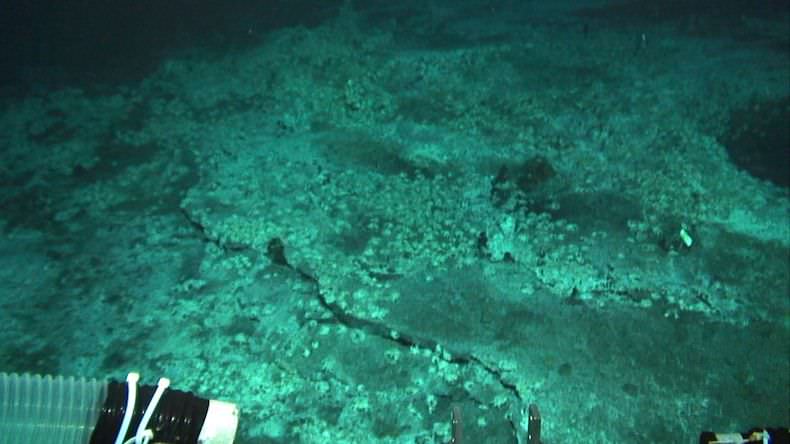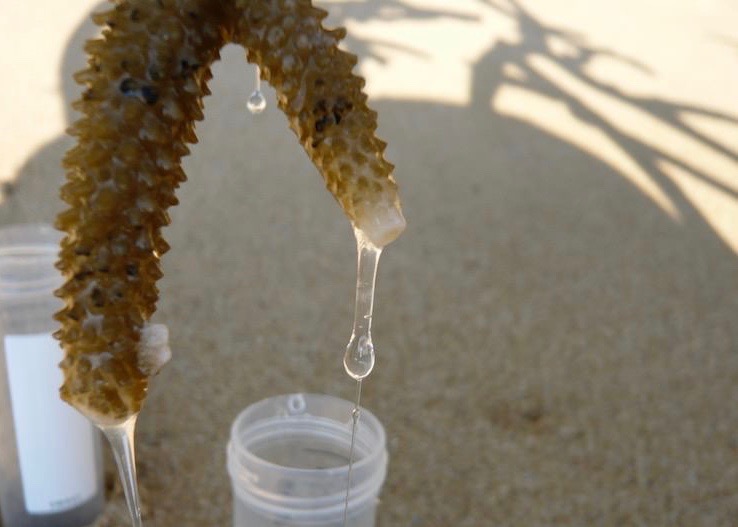Continuous decline of marine biodiversity is one of the critical issues in our oceans. That’s why conservation of marine biodiversity is crucial for the sustainable use of marine resources and healthy human life.
The 10% marine protected area (MPA) target
In order to halt the current rate of marine biodiversity loss at the global, regional and national scale, the Aichi Target was adopted in 2010 (COP10), in which one of the targets is to set aside 10% of the exclusive economic zone (EEZ) in each country as marine protected areas (MPAs).
To achieve this goal, it is essential to fully use scientific knowledge in identifying ecologically and biologically significant areas.I was working to identify priority areas for conservation in various marine habitats around the Japanese archipelago, with a focus on the deep-sea chemosynthetic ecosystems
What is deep-sea chemosynthetic ecosystems?
Deep-sea chemosynthetic ecosystems are fueled by microbial primary production which uses reduced chemical compounds, usually hydrogen sulphide or methane, to produce organic matter. These habitats including hydrothermal vents and cold seeps are generally characterized by numerous rare and endemic species.
The biomass of benthic organisms in these habitats is often remarkably high – 500 to 1000 times greater than that of the surrounding sea floor. Another remarkable trait of these habitats is the high biological productivity: the net primary productivity of deep-sea chemosynthesis at hydrothermal vents is comparable to that of tropical rain forests or coral reefs.
In spite of the scientific importance of understanding ocean biodiversity and ecological connectivity, deep-sea chemosynthetic habitats remain largely unexplored because of their inaccessibility (for example, the average depth of hydrothermal vent field is over 2000 m). The amount of data concerning species diversity of deep-sea chemosynthetic habitats is insufficient, and currently species diversity can only be estimated from fragmented evidence.
Era of mining the deep-ocean floor
In the last few decades, deep-sea chemosynthetic ecosystems have come under increasing threat from various human activities either underway or planned. Recent technological developments have overcome the barrier of water depth and distance from shore, allowing the exploitation of previously inaccessible areas.
This has boosted the continuous expansion of anthropogenic activities in these ecosystems, including destructive bottom trawling and the exploitation of energy and mineral resources. For example, hydrothermal vents produce metal sulphide mounds with high-grade ores making an attractive commercial prospect for mining and led some to speculate that we are just ahead of a deep-sea ‘gold rush’. As a consequence, deep-sea habitats are experiencing serious damage and biodiversity degradation.
How to identify priority areas for conservation?
Setting up protected areas is a critical tool for maintaining habitat integrity and species diversity. However, the baseline scientific data for identifying the protected area is very limited for these deep-sea chemosynthetic habitats compared to those from other marine habitats, which I have realized through identifying significant areas for various marine ecosystems.
The scientific data include species composition and distribution, their variability and dynamics, population size, connectivity, productivity and the biotic/abiotic factors that affect community biodiversity. These basic information are relatively accumulated and available in many shallow marine habitats such as coral reefs, seagrass beds and kelp coasts, which enabled selection of priority areas from various scientific aspects.
On the other hand, there are very few data for deep-sea ecosystems, for which I could only use species composition data for identifying significant areas (Nakajima et al. 2014). Even abundance of species, which is a fundamental data for biodiversity, has only been studied in very limited areas.
Due to the limitation in data, it is even difficult to estimate biodiversity using statistical models. In addition, it is almost certain that there are many as-yet-unknown chemosynthetic habitats hosting many of yet-to-be-described species.
The deep-sea, the last frontier
To date, the majority of deep-sea chemosynthetic ecosystems are unprotected, and only a few chemosynthetic sites have been partially or fully protected from human activities. The deep-sea is the last frontier in our planet. Our scientific ignorance of deep-sea habitats should not be a good justification for increasing commercial exploration and exploitation.
In order to effectively protect and manage our deep-sea habitats, further detailed and comprehensive investigations are warranted. I wish that more people will become concerned about our deep-sea ecosystems, which will improve our scientific knowledge and collaboration, leading to an effective structure for maintaining and protecting the future of the deep-sea ecosystems -before it is too late!



